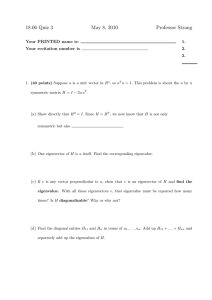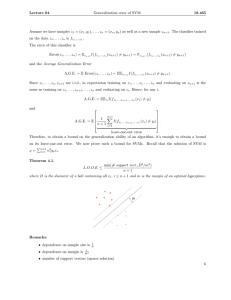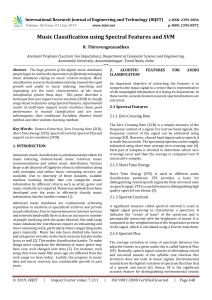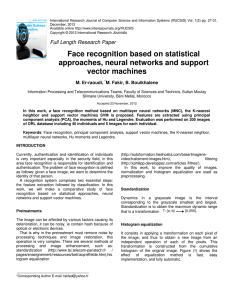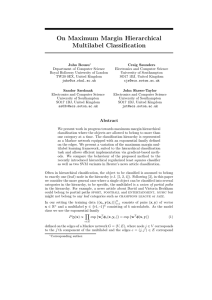Lecture 03 Support vector machines (SVM). 18.465
advertisement
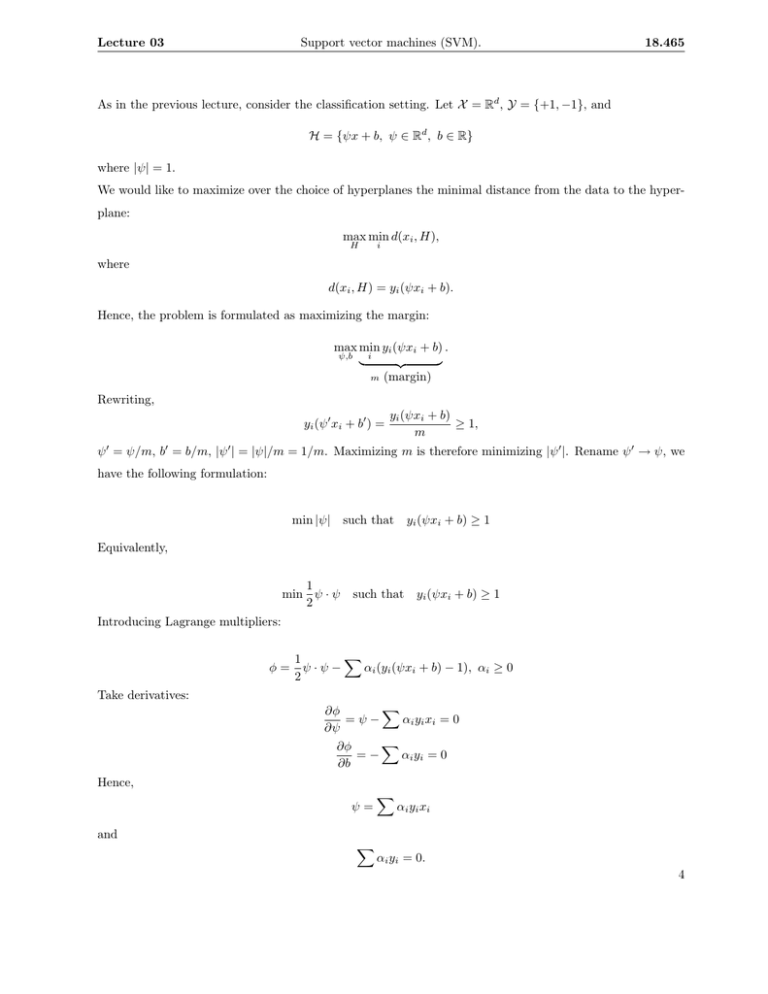
Lecture 03
Support vector machines (SVM).
18.465
As in the previous lecture, consider the classification setting. Let X = Rd , Y = {+1, −1}, and
H = {ψx + b, ψ ∈ Rd , b ∈ R}
where |ψ| = 1.
We would like to maximize over the choice of hyperplanes the minimal distance from the data to the hyper­
plane:
max min d(xi , H),
H
i
where
d(xi , H) = yi (ψxi + b).
Hence, the problem is formulated as maximizing the margin:
max min yi (ψxi + b) .
i
ψ,b
�
��
�
m (margin)
Rewriting,
yi (ψ � xi + b� ) =
yi (ψxi + b)
≥ 1,
m
ψ � = ψ/m, b� = b/m, |ψ � | = |ψ|/m = 1/m. Maximizing m is therefore minimizing |ψ � |. Rename ψ � → ψ, we
have the following formulation:
min |ψ| such that yi (ψxi + b) ≥ 1
Equivalently,
1
min ψ · ψ
2
such that yi (ψxi + b) ≥ 1
Introducing Lagrange multipliers:
φ=
�
1
ψ·ψ−
αi (yi (ψxi + b) − 1), αi ≥ 0
2
Take derivatives:
�
∂φ
=ψ−
αi yi xi = 0
∂ψ
�
∂φ
=−
αi yi = 0
∂b
Hence,
ψ=
�
αi yi xi
and
�
αi yi = 0.
4
Lecture 03
Support vector machines (SVM).
18.465
Substituting these into φ,
φ =
⎛ ⎛
⎞
⎞
n
n
�2 �
�
1 ��
αj yj xj xi + b⎠ − 1⎠
αi yi xi −
αi ⎝yi ⎝
2
j=1
i=1
=
�
�
�
1�
αi αj yi yj xi xj −
αi αj yi yj xi xj − b
αi yi +
αi
2 i,j
i,j
=
�
αi −
1�
αi αj yi yj xi xj
2
The above expression has to be maximized this with respect to αi , αi ≥ 0, which is a Quadratic Programming
problem.
Hence, we have ψ =
�n
i=1
αi yi xi .
Kuhn-Tucker condition:
αi �= 0 ⇔ yi (ψxi + b) − 1 = 0.
Throwing out non-support vectors xi does not affect hyperplane ⇒ αi = 0.
The mapping φ is a feature mapping:
x ∈ Rd −→ φ(x) = (φ1 (x), φ2 (x), ...) ∈ X �
where X � is called feature space.
Support Vector Machines find optimal separating hyperplane in a very high-dimensional space. Let K(xi , xj ) =
�∞
�
k=1 φk (xi )φk (xj ) be a scalar product in X . Notice that we don’t need to know mapping x → φ(x). We
�∞
only need to know K(xi , xj ) = k=1 φk (xi )φk (xj ), a symmetric positive definite kernel.
Examples:
(1) Polynomial: K(x1 , x2 ) = (x1 x2 + 1)� , � ≥ 1.
2
(2) Radial Basis: K(x1 , x2 ) = e−γ|x1 −x2 | .
(3) Neural (two-layer): K(x1 , x2 ) =
1
1+eαx1 x2 +β
for some α, β (for some it’s not positive definite).
Once αi are known, the decision function becomes
��
�
��
�
sign
αi yi xx · x + b = sign
αi yi K(xi , x) + b
5




